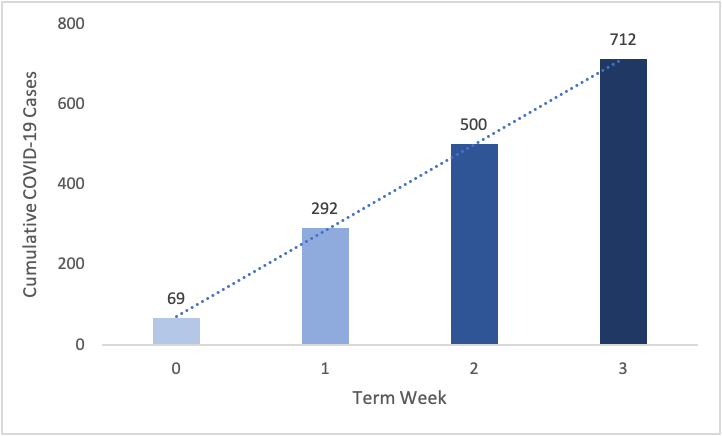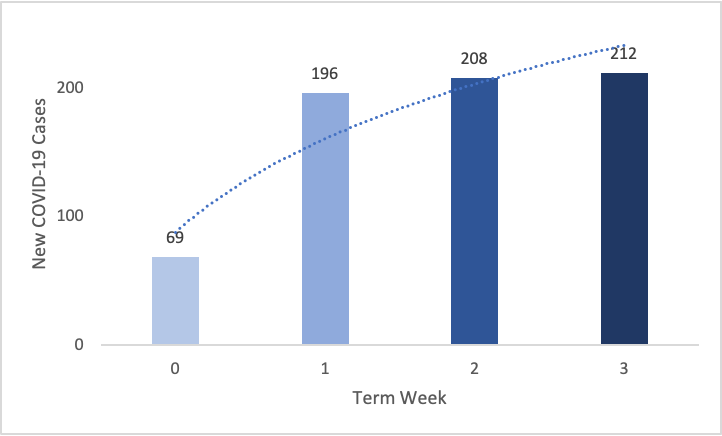Bake Off finishes, mum flicks through the TV guide a bit, turns back to Channel 4. “It’s Sandi’s new thing. There’s nothing else on.” We’re looking at a man in a smart shirt, black waistcoat, no tie, mid-thirties perhaps, being asked by Sandi Toksvig how to spell ‘clock’. He stumbles through the letters, strain obvious on his face, a questioning tone of voice making his struggle clear. “Well, you’ve inadvertently spelled ‘cock’, I don’t know if you’re okay with that.”
It’s looking like some kind of naff reality TV: ‘watch these fully grown adults fail at life!’ kind of thing. Clips of a team of eight trying to read a recipe aloud, follow written instructions, and spell words like ‘while’ and ‘child’ aloud – all unsuccessfully. These adults use fully conversant English when speaking, with average vocabularies and no difficulties in speech comprehension. I can’t quite work out why exactly these people, double, triple my age, are getting excited by writing the word ‘tube’ correctly.
By this point, I’m about to reach for my headphones and watch last week’s Gogglebox. The show seems a mixture of silly and frustrating and to be honest, I’m tired, I’ve been reading all day, and I don’t have the mental energy to watch other people try.
“Sorry mum, I just can’t watch this. Like… this can’t be real. How could you be an adult and not be able to read?” This was said more in a tone of dismay than genuine questioning, but she replies, “Well, I can believe it. Some people just never learnt. If you don’t really get it by the end of primary school, and no one helps in secondary school, then no one’s going to teach you.”
I can’t quite grasp the show’s angle, but Toksvig’s tone makes it clear that there are genuine, heartfelt intentions behind these scenes that feel unfamiliar to me. Dyslexia and other learning difficulties had been mentioned by this point, but the idea that reading and writing could still be inaccessible skills to adults had never really crossed my mind before. The remainder of The Write Offs showed me that it really should have crossed my mind, and it has been occupying it a lot since.
Paul, 43, is currently talking about his new-born. “I just don’t wanna [sic] be the guy who, when his kid comes home from school, at four or five, and goes ‘Daddy, what does this mean?’, doesn’t have the answer.” He’s shown trying to read a from a packet of nappies. “Er… it could be anything at all.” Sandi tells us he has the reading and writing age of a seven-year-old.
The eight ‘learners’ are now reading from a script together. It’s Paul’s turn, and he has visibly frozen up. This has happened many times so far in the program, and his response to Toksvig’s question of whether he is okay is not surprising either: “It’s kind of a bit scary.”
But the next few minutes shock me.
“I was an English and drama teacher. Three and a half years ago I had a stroke, damaged the left-hand side of my brain, and now I can’t read and write. It just changed everything really quickly, everything had gone in a second.”
The camera pans to him attempting to read a line of dialogue, squinting and stuttering on every word. He tries four times to say the word “effects”.
“My favourite stuff was Shakespeare. I have the complete Shakespeare at home, probably about three or four versions of it, in a box, in my garage.”
So do I. I’m an English student. I love Shakespeare. I could go now and pick up anything of his and read through it. Just like Paul could. Now he cannot even read the word ‘budget’.
Nothing has hit me as hard as this minute of TV for months. I had been sat in my little ivory tower of ‘well, why didn’t they just learn?’, but now I felt all that come down. Because I could see myself in Paul: exactly what happened to him could happen to me. I was hit by a basic lesson: you should not assume that everyone is starting from an equal point.
From here, I stayed a lot quieter, trying to properly digest the program and actually listen to the eight, rather than just my own preconceptions about what their difficulties in reading and writing must say about them. I feel like Craig is speaking directly to me when he says, “People who can read and write do take it for granted. […] Unless you’re in the situation you don’t know how hard it is.” Craig has dyslexia, along with at least 10% of the population.
Disruption to the everyday life of someone with dyslexia can range from slightly longer processing times when reading and writing, struggling to remember the words someone used, to thorough disruption of what most would consider their usual routine. But dyslexia does not affect IQ: people such as Einstein and de Vinci are now thought to have been on the dyslexic spectrum.
The number of British adults who struggle to read and write includes some who are dyslexic, and some like Paul who have suffered brain injuries. Many other factors may place people in the category of ‘functionally illiterate’, which the National Literacy Trust describes as those who can “understand short straightforward texts on familiar topics accurately and independently, and obtain information from everyday sources, but reading information from unfamiliar sources, or on unfamiliar topics, could cause problems.” Over 7 million people in the UK are functionally illiterate.
“I can believe it,” my mum replies after I sceptically read this stat out to her. She works in one of the local village primary schools. “Some of the kids who leave us, they can barely read and write. No one’s going to sit down and teach them how to write at secondary school if they don’t already know. I think we fail them.”
Most children start reading around the age of 4, but if they are not talked to, listened to, asked questions, and interacted with in other ways from the earliest stages of their cognitive development, it will be exponentially harder for them to catch up with the progression of their peers as they grow.
This is why affective access and outreach are important. Essential. We sit in the libraries of Oxford, reading ground-breaking theses, while in this very constituency 12.5% of residents hold no qualifications. We cannot strive for progression in our diverse fields without considering where progression is needed, closer to home: the UK has the largest literacy gap between employed and unemployed in the Western world.
Clearly, the decisions being made at the top are not filtering down to make an effective system. Perhaps this is partly because those decision-makers are ignorant of the reality. With a cabinet that was 64% privately educated (compared to 7% of the country as a whole), this is hardly surprising.
Government-backed research has found that schools with an ‘Outstanding’ Ofsted rating have better performing students than those from schools that ‘Require Improvement’. Selective and fee-paying schools have the best performing students. You don’t need me to tell you that most of the best performing children are thus from most affluent families. Of course, not all well-off people have high literacy rates, and many less-well-off people do. But the trend is still striking: Britain’s most influential people are over 5 times more likely to have been to a fee-paying school than the general populatio[EH1] n. While the results of this system are far from the only factors limiting the literacy levels of UK adults, they are a large part that needs urgent addressing. The Write Offs shows that effective help can most definitely be given: all eight of the participants progressed at least 3 school-years of reading and writing in 16 weeks.
34-year-old Dean, a telecoms engineer with the reading age of a nine-year-old, reminded us at the end of the program why this help is necessary.
“Did you know that there is a staggering number of young offenders with reading and writing difficulties. Now, imagine if these young offenders were given a teacher like we’ve had. Someone to tell them that their big, beautiful brains just think differently to everybody else’s and need teaching in a different, more informed way. Albert Einstein, Sir Issac Newton, Thomas Edison, all had a dyslexic brain, just like mine. My question to you all is do you think we could stop wasting good minds? Do you think we could unlock the next Einstein?”





